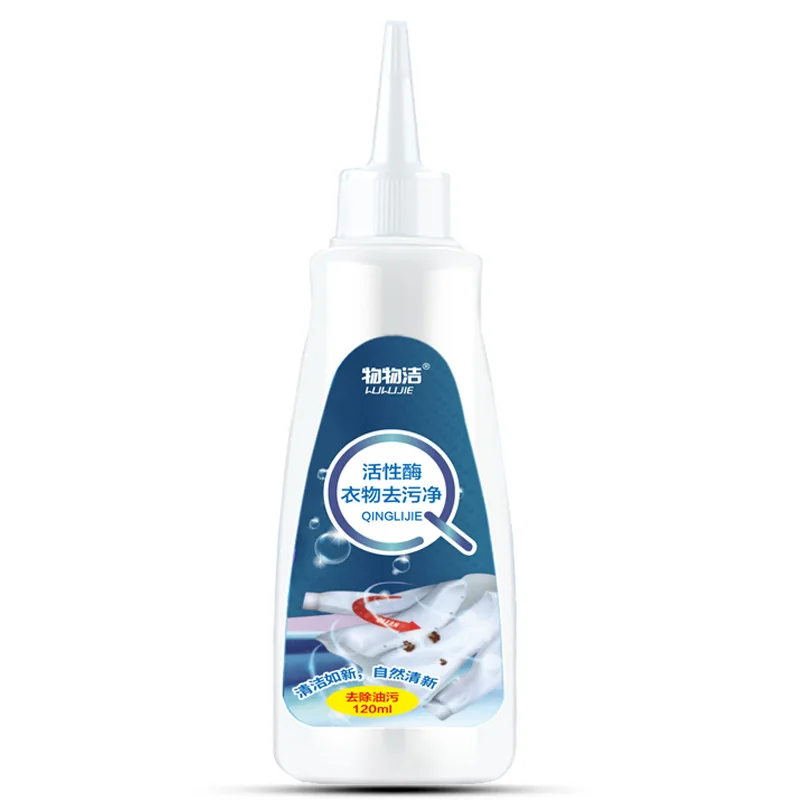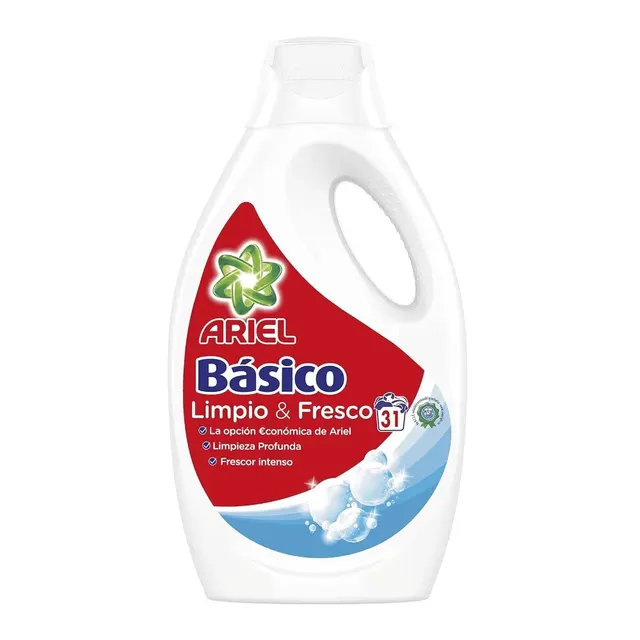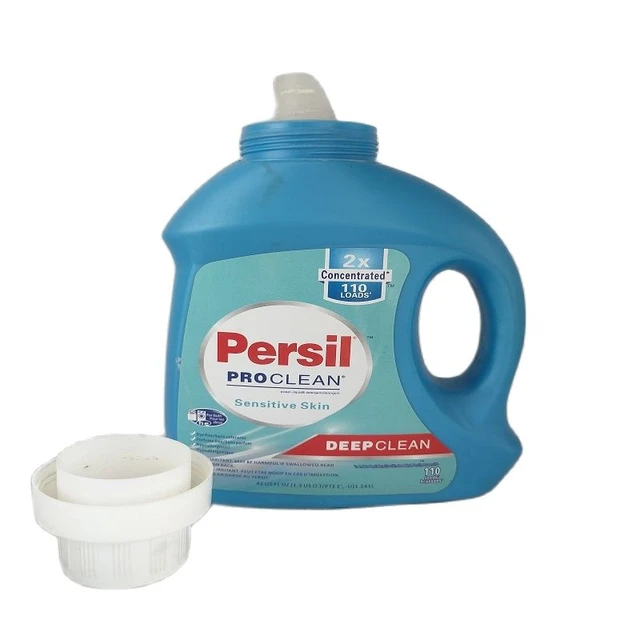 Introduction:
Introduction:
Laundry detergent is a staple in every household, playing a crucial role in keeping our clothes clean and fresh. But have you ever wondered how laundry detergent actually works? In this comprehensive guide, we will explore the science behind laundry detergent and its cleaning process. By understanding how laundry detergent works, you can make informed choices about the products you use and achieve the best results in your laundry routine.
 Here are some common types of laundry detergents:
Here are some common types of laundry detergents:
There are various types of laundry detergents available, each formulated for different purposes and preferences. Here are some common types of laundry detergents:
Regular or Standard Detergent:
Regular or standard detergents are designed for everyday laundry needs. They effectively remove dirt, stains, and odors from a wide range of fabrics and clothing types.
High-Efficiency (HE) Detergent:
High-efficiency detergents are specifically formulated for high-efficiency washing machines, which use less water. HE detergents are designed to produce less suds and are more concentrated, ensuring effective cleaning with minimal water usage.
Plant-Based or Natural Detergent:
Plant-based or natural detergents are made from biodegradable and renewable ingredients, often derived from plants. They are free of harsh chemicals, artificial fragrances, and dyes, making them a preferred choice for individuals with sensitive skin or allergies. These detergents are also considered more environmentally friendly.
Fragrance-Free Detergent:
Fragrance-free detergents are specifically formulated without added scents or perfumes. They are suitable for individuals with fragrance sensitivities or those who prefer their laundry to be devoid of any lingering fragrance.
Detergent with Enzymes:
Detergents with enzymes are effective in breaking down and removing tough stains such as protein-based stains (blood, grass), oily stains, or food stains. Enzymes in the detergent work on specific stain types to improve cleaning efficacy.
Detergent Pods or Pacs:
Detergent pods or pacs are pre-measured, single-use detergent capsules that dissolve in the wash. They are convenient and eliminate the need to measure or pour liquid or powder detergent. However, caution should be exercised to ensure they are kept away from children, as they can be mistaken for candies.
Specialty Detergents:
Specialty detergents are designed for specific needs or fabrics. For example, there are detergents formulated for baby clothes, delicates, woolens, or dark-colored fabrics. These detergents provide gentle cleaning and maintain the quality and integrity of the specific fabric or garment.
Homemade laundry detergent
Refers to the practice of making your own laundry cleaning solution using simple ingredients. This DIY alternative often involves mixing ingredients like baking soda, washing soda, borax, grated soap, and essential oils to create an effective and environmentally friendly laundry detergent. Homemade laundry detergent offers a customizable and cost-effective option while avoiding potential harsh chemicals or additives found in some commercial detergents. It can be a practical and sustainable approach for individuals looking to reduce their environmental footprint and opt for more natural cleaning solutions.
When choosing a laundry detergent, consider factors such as the fabric type, laundry needs, any specific requirements (such as allergies or sensitivity), and the washing machine type. Follow the manufacturer’s instructions for usage and dosage to ensure effective cleaning while maintaining fabric integrity.
 Basic Components of Laundry Detergent
Basic Components of Laundry Detergent
Surfactants:
Surfactants are the key ingredient in laundry detergent.
They have molecules with both hydrophilic and hydrophobic properties, allowing them to remove dirt and stains from fabrics.
Builders:
Builders are chemicals that improve the effectiveness of surfactants.
They soften water, remove mineral deposits, and enhance the cleaning process.
Enzymes:
Enzymes are biological molecules that help break down and remove stains.
Different enzymes target specific types of stains, such as protein, starch, or grease.
The Cleaning Process
Wetting and Penetration:
Laundry detergent works by reducing the surface tension of water, allowing it to penetrate fabric more effectively.
This helps the water and detergent mixture fully wet and surround the fibers, enabling the cleaning process.
Soil Suspension:
Surfactants in laundry detergent capture and lift dirt and stains from the fabric.
They surround the dirt particles, suspending them in the water so they can be easily rinsed away.
Emulsification:
The hydrophobic portion of surfactant molecules attracts and surrounds oily or greasy stains.
By forming an emulsion, the detergent breaks down and disperses the oils, allowing them to be washed away.
Enzymatic Action:
Enzymes in laundry detergent target specific types of stains and break them down at a molecular level.
For example, protease breaks down proteins, amylase tackles starches, and lipase acts on greasy stains.
 Additional Features of Laundry Detergent
Additional Features of Laundry Detergent
Stain Removal:
Laundry detergents often contain additional stain-fighting ingredients, such as oxidizing agents or bleach alternatives.
These ingredients help remove stubborn stains and brighten laundry.
Fragrance and Softeners:
Many laundry detergents include fragrance to leave a pleasant scent on the laundry.
Some also incorporate fabric softeners, which reduce static, improve fabric feel, and provide a fresh scent.
Choosing the Right Laundry Detergent
Consider Fabric and Load Types:
Different fabrics and loads require different types of laundry detergent.
Consider whether you need a regular detergent, one designed for delicate fabrics, or a specific formulation for heavily soiled clothing.
Allergies and Skin Sensitivity:
If you or your family members have allergies or sensitive skin, opt for hypoallergenic or fragrance-free detergents.
These are less likely to cause irritation or allergies.
Environmental Impact:
Eco-friendly laundry detergents are formulated with environmentally friendly ingredients and are biodegradable.
If sustainability is a priority, choose detergents labeled as eco-friendly or phosphate-free.
Here are some popular trends in laundry detergent:
The trends in laundry detergent have been evolving to meet changing consumer demands and environmental concerns. Here are some popular trends in laundry detergent:
Eco-Friendly and Natural Ingredients:
There is a growing preference for laundry detergents that use eco-friendly and natural ingredients. Consumers are increasingly seeking products that are free of harsh chemicals, artificial fragrances, and dyes. Plant-based ingredients and biodegradable formulations are gaining popularity as a more sustainable choice.
Concentrated Formulations:
Concentrated laundry detergents are becoming popular due to their smaller packaging and reduced environmental impact. These formulations require less water and packaging material, making them more efficient and convenient for consumers.
Allergy-Friendly and Hypoallergenic Options:
Allergy-friendly and hypoallergenic laundry detergents are gaining popularity, especially among individuals with sensitive skin or allergies. These detergents are often free of common allergens and harsh irritants, providing a gentler and safer option for sensitive individuals.
Detergent Pods or Pacs:
Laundry detergent pods or pacs have become a convenient and increasingly popular option. These pre-measured, single-use capsules eliminate the need for measuring or pouring detergent. However, it’s worth noting that proper storage and keeping them out of reach of children are crucial due to their potential to appear as attractive to young children.
Stain-Fighting and Odor Eliminating Abilities:
Laundry detergents with enhanced stain-fighting and odor-eliminating capabilities continue to be in demand. Consumers appreciate products that effectively remove tough stains, such as protein-based stains (blood, grass), oils, or food, while also eliminating unpleasant odors from their laundry.
Tech-Enhanced Detergents:
Some laundry detergents are incorporating technology to enhance cleaning performance. For example, some brands utilize enzymes or other advanced formulas to target specific stain types more effectively.
Packaging Sustainability:
Sustainable and eco-friendly packaging is gaining importance in the laundry detergent market. Companies are using recyclable or biodegradable materials and reducing excess packaging to minimize waste and reduce environmental impact.
Overall, the current trends in laundry detergent focus on eco-friendliness, ingredient transparency, enhanced performance, and convenient usage. Consumers are increasingly leaning towards options that align with their environmental values while still delivering effective cleaning results.
 Conclusion:
Conclusion:
Laundry detergent is a remarkable product that utilizes surfactants, builders, and enzymes to effectively clean and remove stains from our clothes. By understanding the science behind its cleaning process, we can make informed choices about the laundry detergents we use. Consider the fabric type, load size, and any specific needs or preferences when selecting a laundry detergent. Whether it’s removing tough stains, softening fabric, or providing a delightful fragrance, laundry detergents play a vital role in maintaining clean and fresh laundry.
